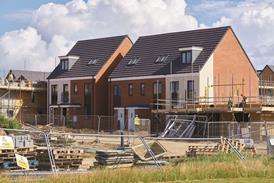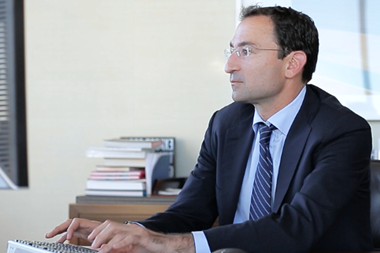How can real estate collectively address the sector’s impact on the environment to achieve a carbon-neutral, or even carbon-positive, built environment?

The climate crisis is one of the most urgent social, environmental and economic challenges. Society is making too little progress towards the 1.5°C Paris agreement target, yet real estate has an important role to play in accelerating progress.
As the world shifts to low-carbon economies, forms of carbon pricing will be important for investment decisions as countries tackle climate change and decarbonisation targets.
Carbon pricing is more prevalent in energy-intensive sectors, with limited familiarity and relatively slow progress across the built environment.
As a relatively ‘new’ concept there are undoubtedly misconceptions, but carbon pricing must become a vital element to decarbonise the built environment. To make that case, it’s important to eliminate any misunderstandings.
The concept is simple: polluter pays the cost of managing and/or reducing emissions, and it’s not simply to penalise but to set the carbon price at such a level to incentivise changes in behaviour and speed emissions reductions.
This is done in two ways. External carbon pricing is levied on emissions by an outside body such as a local authority or national government. This regulatory approach could be a straightforward tax on emissions, or the approach that governments including the EU takes: an Emissions Trading System (ETS). With an ETS, companies are allocated annual emissions allowance quotas. Companies with spare allowances may trade with others expecting to exceed their quota. The EU also auctions further allowances, with the capital raised going to member states or an innovation fund.
In addition, there is internal carbon pricing is where a company imposes a cost on the carbon it emits, with capital raised retained and often allocated internally to other decarbonisation activities. A recent survey for ULI C Change showed that around 8% of companies are implementing a full fee-paying carbon price, with another 4% modelling the impact with shadow carbon pricing.
This concurs with global research undertaken this year by ULI with PwC for the Emerging Trends in Real Estate Global Outlook, which indicates that the potential for carbon pricing to drive decarbonisation is at risk as it is limited by voluntary application of internal pricing, which is set too low to influence behaviour given the capital intensity of the sector.
The sector must take the initiative and not wait for regulation because pressure is increasingly coming from other directions, from states to citizen groups.
European and US oil and gas companies have recently been subject to high-profile legal action from environmental groups and even states concerning insufficient measures taken to mitigate the impacts of carbon dioxide emissions or fossil fuel risks.
Meanwhile, six young people from areas ravaged by wildfires and heatwaves in Portugal have just gone head to head with 32 European governments, alleging in court that their failure to act quickly on climate change violates their human rights.
Could the built environment face similar consequences? It is one of the largest contributors to global emissions, but currently its impact is much lower profile than, for example, oil and gas.
Real estate still has the chance to collaboratively address the direct and indirect consequences of the climate crisis, embrace its responsibilities and co-ordinate action, rather than risk having action imposed. Internal price-setting can help to achieve this.
The good news is progress is starting. From the work with ULI members and the wider industry, there’s clearly an evolution of views, and increasing numbers are looking at carbon pricing.
Key challenges concern the lack of knowledge and how pricing relates to other decarbonisation risks and the ‘tools’ used such as the cost of decarbonisation and offsets.
The ULI has developed initial ideas on how the industry might standardise its approach to pricing, recognising the barriers and support needed to build the business case.
One main learning that must be factored in a solution concerns the complexity of real estate, which is an ecosystem of different industries, and responsibility for different operational and embodied emissions lies with specific parts of the industry, with other parts also contributing.
An internal carbon pricing system set by the industry, which distributes responsibility across different stakeholders, and incentivises others to act, may provide a sophisticated solution ahead of imposed regulation such as ETS, while retaining the funds within the industry to support innovation.
The industry taking ownership of carbon emissions by collaborating at scale to co-create a solution for carbon pricing is the best opportunity to make the greatest impact on carbon emissions.
Lisette van Doorn is chief executive of ULI Europe































No comments yet